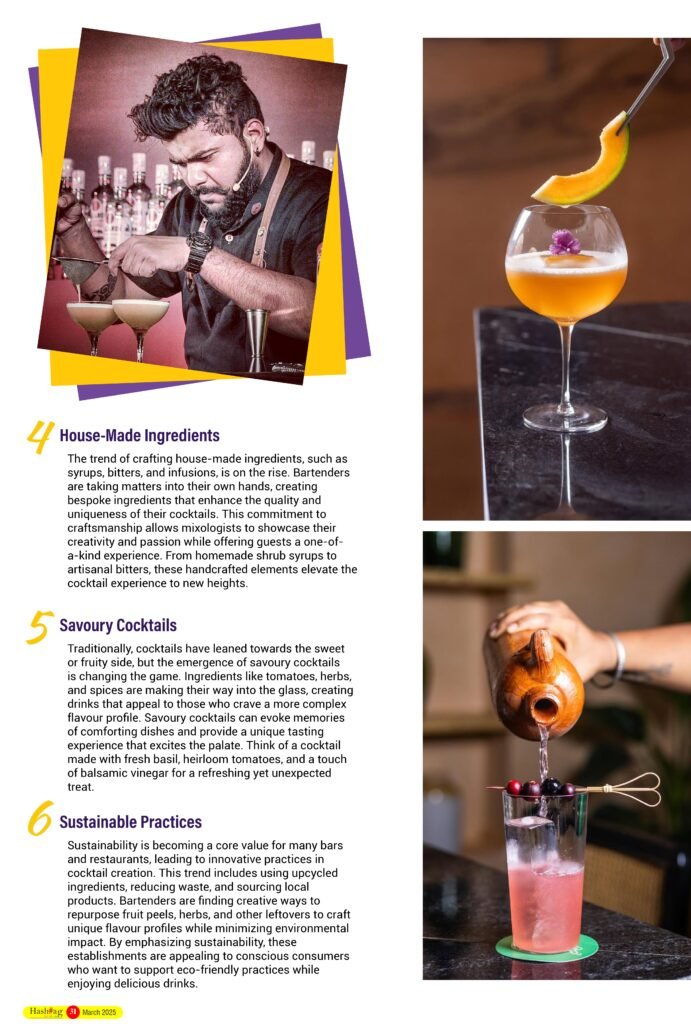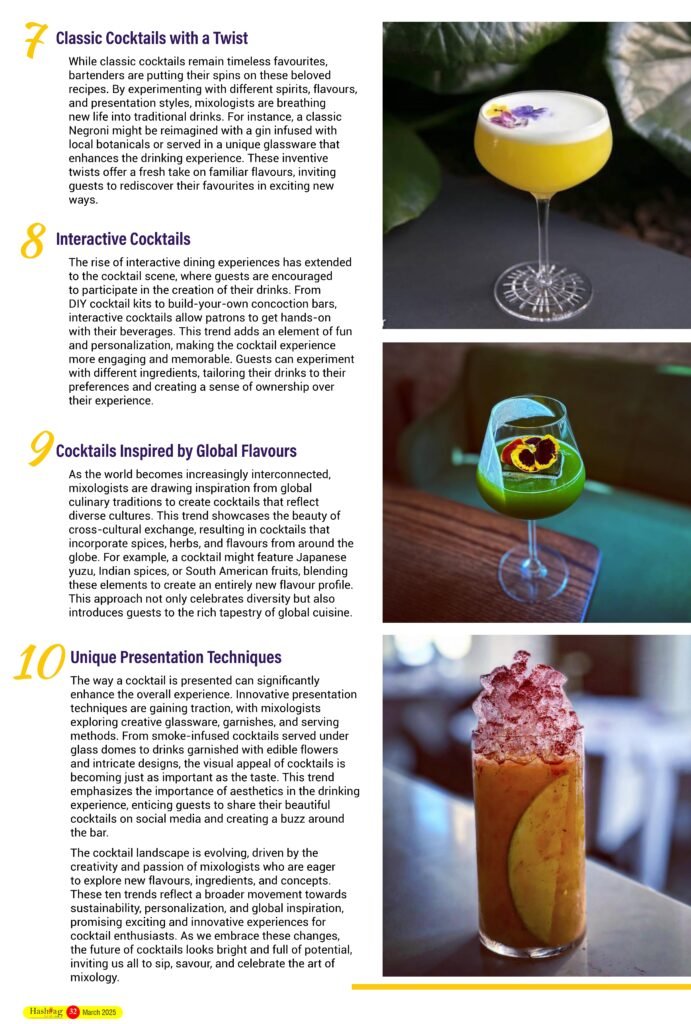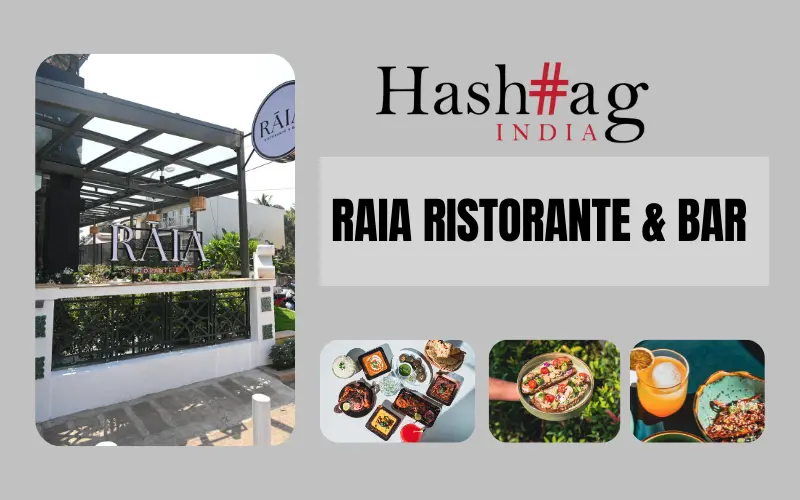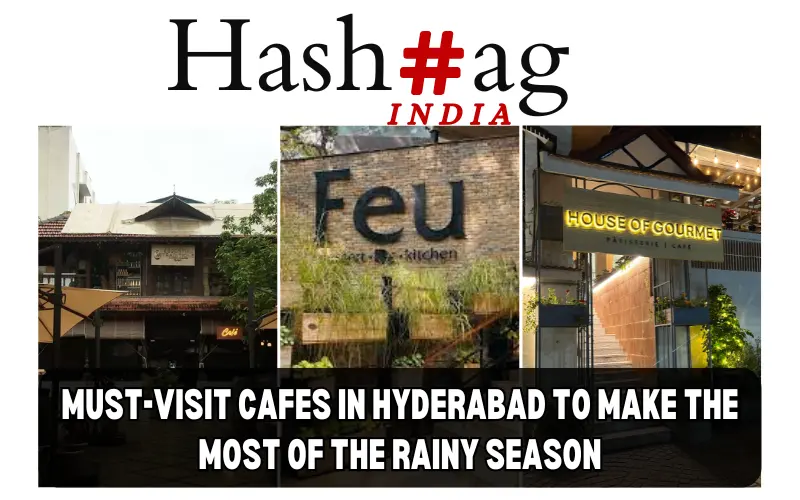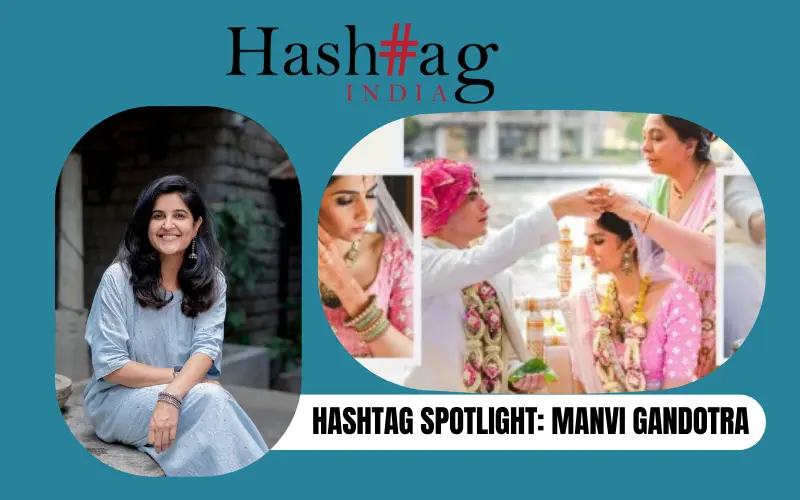Chetan Gangan, the celebrated mixologist and Co-Founder of YAAR, a vibrant and multi-experiential bar and restaurant in Morjim, Goa, has been at the forefront of redefining cocktail culture. With over a decade of experience in the beverage industry, he is known for his inventive approach to mixology, crafting immersive drinking experiences that celebrate friendship and community. His unique concepts, such as the Island Bar and Classroom Bar at YAAR, exemplify the ever-evolving nature of the cocktail scene—a dynamic world of creativity and experimentation. As mixologists continue to explore new ingredients, techniques, and concepts, a fresh wave of innovation is sweeping through bars and restaurants. Here are ten innovative cocktail trends that are set to shape the drinking landscape in the coming months.

1. Foraged Ingredients
As consumers become more environmentally conscious, mixologists are turning to nature for inspiration. Foraged ingredients, such as wild herbs, edible flowers, and seasonal fruits, are becoming increasingly popular. By using local flora, bartenders create cocktails that not only taste unique but also tell a story about their surroundings. This trend emphasizes sustainability and a deeper connection to nature, allowing guests to experience flavours that are truly distinctive and reflective of their region.
2. Low and No-Alcohol Cocktails
The rise of mindful drinking has given birth to a growing interest in low and no-alcohol cocktails. These beverages provide the sophistication of traditional cocktails without the effects of alcohol. Bartenders are crafting complex, flavourful drinks using ingredients like herbal infusions, high-quality bitters, and non-alcoholic spirits. These innovative options allow consumers to enjoy a social drinking experience while prioritizing their health and well-being.
3. Flavour Pairing and Fusion Cocktails
Mixologists are increasingly exploring the science of flavour pairing to create unexpected combinations that tantalize the palate. By blending diverse culinary influences, bartenders are crafting cocktails that combine elements from different cuisines, resulting in innovative flavours that surprise and delight. Think of a spicy margarita infused with Thai basil or a smoky mezcal drink featuring tamarind and ginger. These fusion cocktails are not only delicious but also invite guests to embark on a flavour journey.
4. House-Made Ingredients
The trend of crafting house-made ingredients, such as syrups, bitters, and infusions, is on the rise. Bartenders are taking matters into their own hands, creating bespoke ingredients that enhance the quality and uniqueness of their cocktails. This commitment to craftsmanship allows mixologists to showcase their creativity and passion while offering guests a one-of-a-kind experience. From homemade shrub syrups to artisanal bitters, these handcrafted elements elevate the cocktail experience to new heights.
5. Savoury Cocktails
Traditionally, cocktails have leaned towards the sweet or fruity side, but the emergence of savoury cocktails is changing the game. Ingredients like tomatoes, herbs, and spices are making their way into the glass, creating drinks that appeal to those who crave a more complex flavour profile. Savoury cocktails can evoke memories of comforting dishes and provide a unique tasting experience that excites the palate. Think of a cocktail made with fresh basil, heirloom tomatoes, and a touch of balsamic vinegar for a refreshing yet unexpected treat.
6. Sustainable Practices
Sustainability is becoming a core value for many bars and restaurants, leading to innovative practices in cocktail creation. This trend includes using upcycled ingredients, reducing waste, and sourcing local products. Bartenders are finding creative ways to repurpose fruit peels, herbs, and other leftovers to craft unique flavour profiles while minimizing environmental impact. By emphasizing sustainability, these establishments are appealing to conscious consumers who want to support eco-friendly practices while enjoying delicious drinks.
7. Classic Cocktails with a Twist
While classic cocktails remain timeless favourites, bartenders are putting their spins on these beloved recipes. By experimenting with different spirits, flavours, and presentation styles, mixologists are breathing new life into traditional drinks. For instance, a classic Negroni might be reimagined with a gin infused with local botanicals or served in a unique glassware that enhances the drinking experience. These inventive twists offer a fresh take on familiar flavours, inviting guests to rediscover their favourites in exciting new ways.
8. Interactive Cocktails
The rise of interactive dining experiences has extended to the cocktail scene, where guests are encouraged to participate in the creation of their drinks. From DIY cocktail kits to build-your-own concoction bars, interactive cocktails allow patrons to get hands-on with their beverages. This trend adds an element of fun and personalization, making the cocktail experience more engaging and memorable. Guests can experiment with different ingredients, tailoring their drinks to their preferences and creating a sense of ownership over their experience.
9. Cocktails Inspired by Global Flavours
As the world becomes increasingly interconnected, mixologists are drawing inspiration from global culinary traditions to create cocktails that reflect diverse cultures. This trend showcases the beauty of cross-cultural exchange, resulting in cocktails that incorporate spices, herbs, and flavours from around the globe. For example, a cocktail might feature Japanese yuzu, Indian spices, or South American fruits, blending these elements to create an entirely new flavour profile. This approach not only celebrates diversity but also introduces guests to the rich tapestry of global cuisine.
10. Unique Presentation Techniques
The way a cocktail is presented can significantly enhance the overall experience. Innovative presentation techniques are gaining traction, with mixologists exploring creative glassware, garnishes, and serving methods. From smoke-infused cocktails served under glass domes to drinks garnished with edible flowers and intricate designs, the visual appeal of cocktails is becoming just as important as the taste. This trend emphasizes the importance of aesthetics in the drinking experience, enticing guests to share their beautiful cocktails on social media and creating a buzz around the bar.
The cocktail landscape is evolving, driven by the creativity and passion of mixologists who are eager to explore new flavours, ingredients, and concepts. These ten trends reflect a broader movement towards sustainability, personalization, and global inspiration, promising exciting and innovative experiences for cocktail enthusiasts. As we embrace these changes, the future of cocktails looks bright and full of potential, inviting us all to sip, savour, and celebrate the art of mixology.



